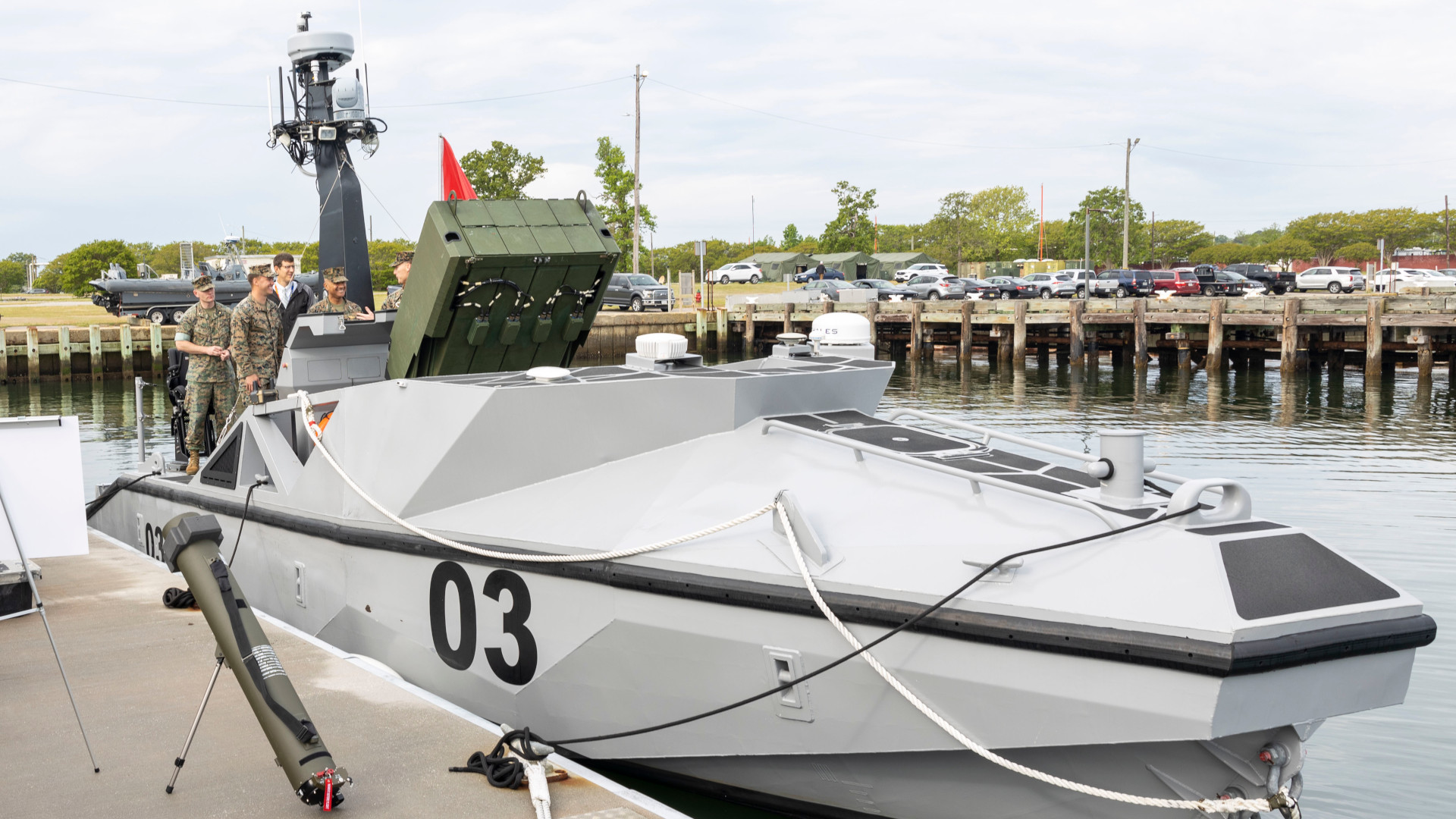The U.S. Marine Corps has offered a new look at one of its Long Range Unmanned Surface Vessels, or LRUSVs, fitted with a launcher that can be loaded with up to eight Hero-120 loitering munitions. The combination offers Marines an additional tool for striking targets on land and at sea, as well as just helping to provide additional situational awareness.
Fleet Marine Force, Atlantic (FMFLANT) released photographs of the LRUSV with the Hero-120 launcher yesterday. The pictures are from a visit Marine Corps Lt. Gen. Brian Cavanaugh, head of FMFLANT, made to Joint Expeditionary Base Little Creek-Fort Story in Virginia in April, specifically to be briefed on the capabilities of this new drone boat. Shipbuilder Metal Shark, the company that designed the LRUSV, has also released pictures from this event.
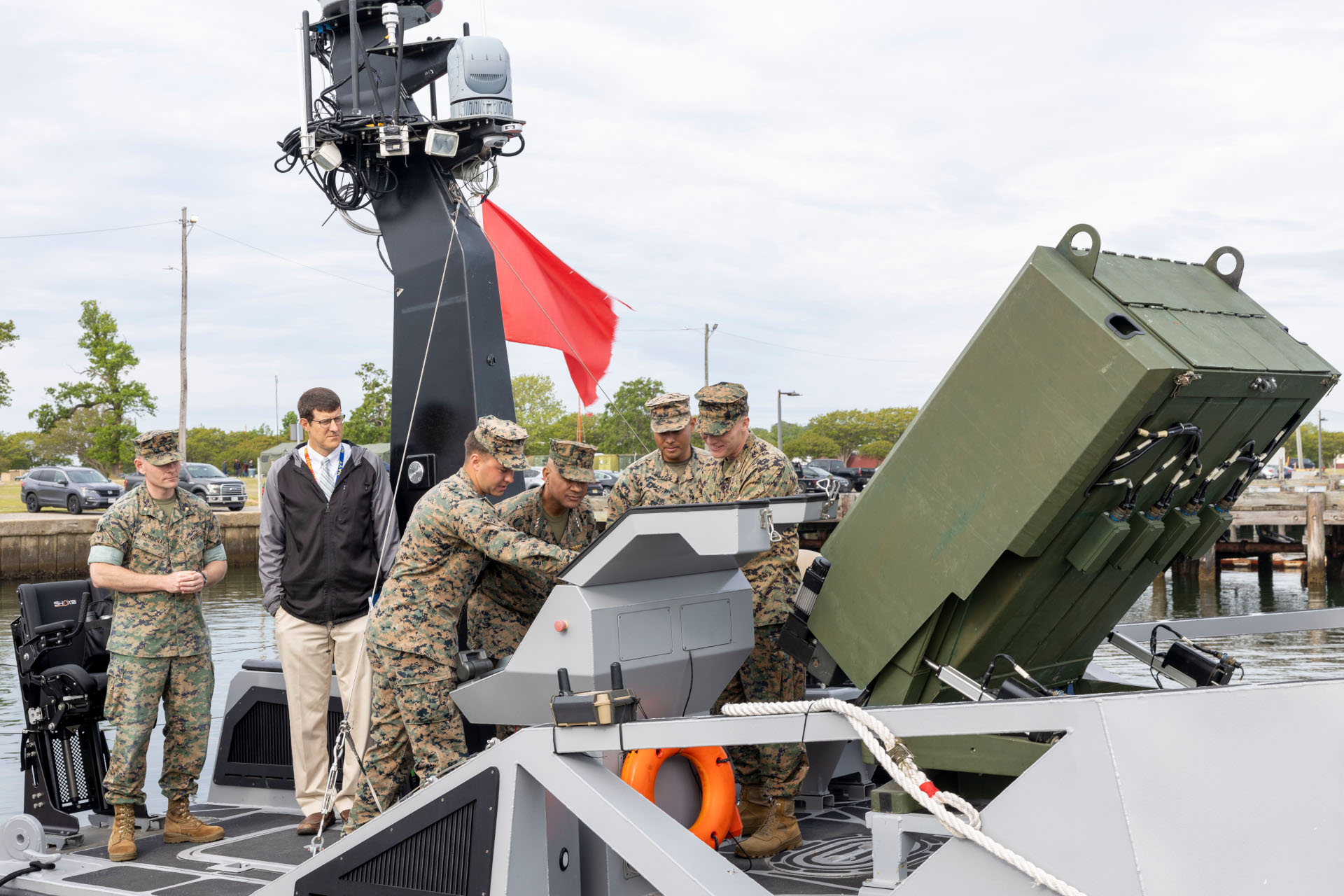
The Marine Corps expects to employ the LRUSV “primarily… as an intelligence, surveillance and reconnaissance platform,” according to a common caption accompanying all of the images from Cavanaugh’s trip to Little Creek-Fort Story. However, it will also be “capable of extended travel and transporting loitering munitions that accurately track and destroy targets on sea or land.”
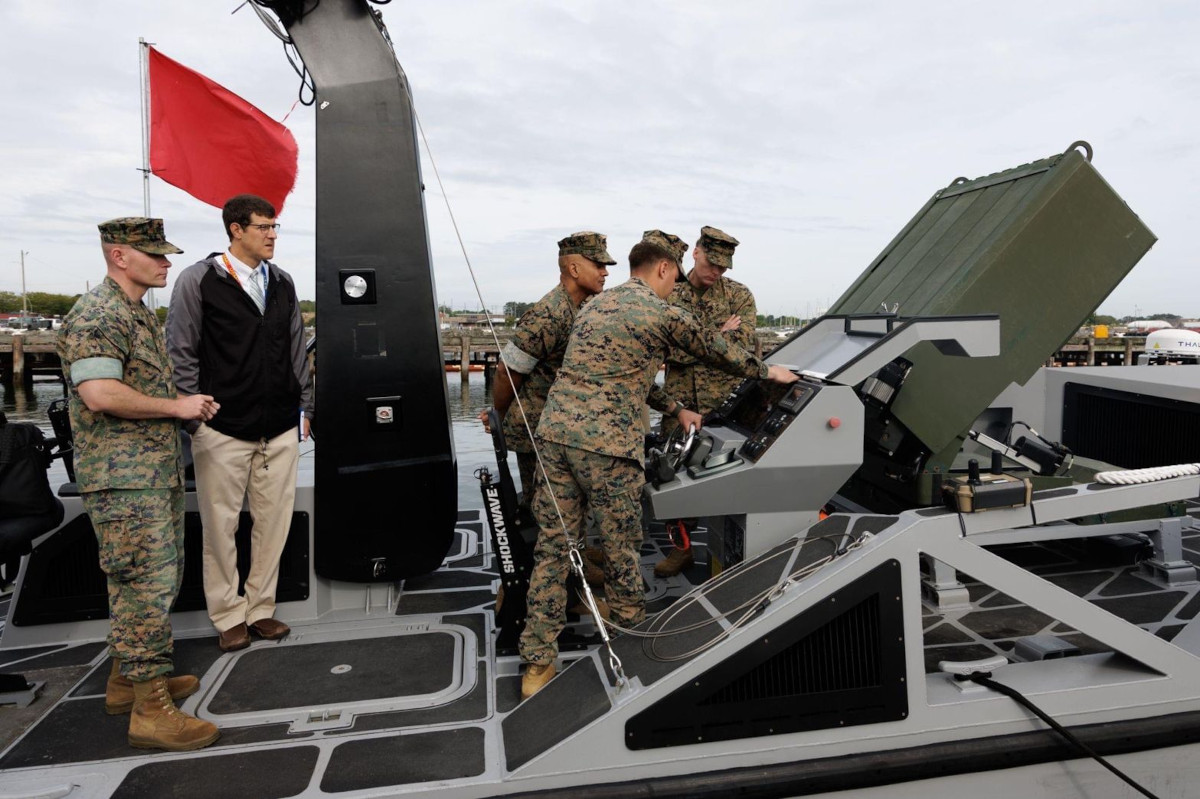
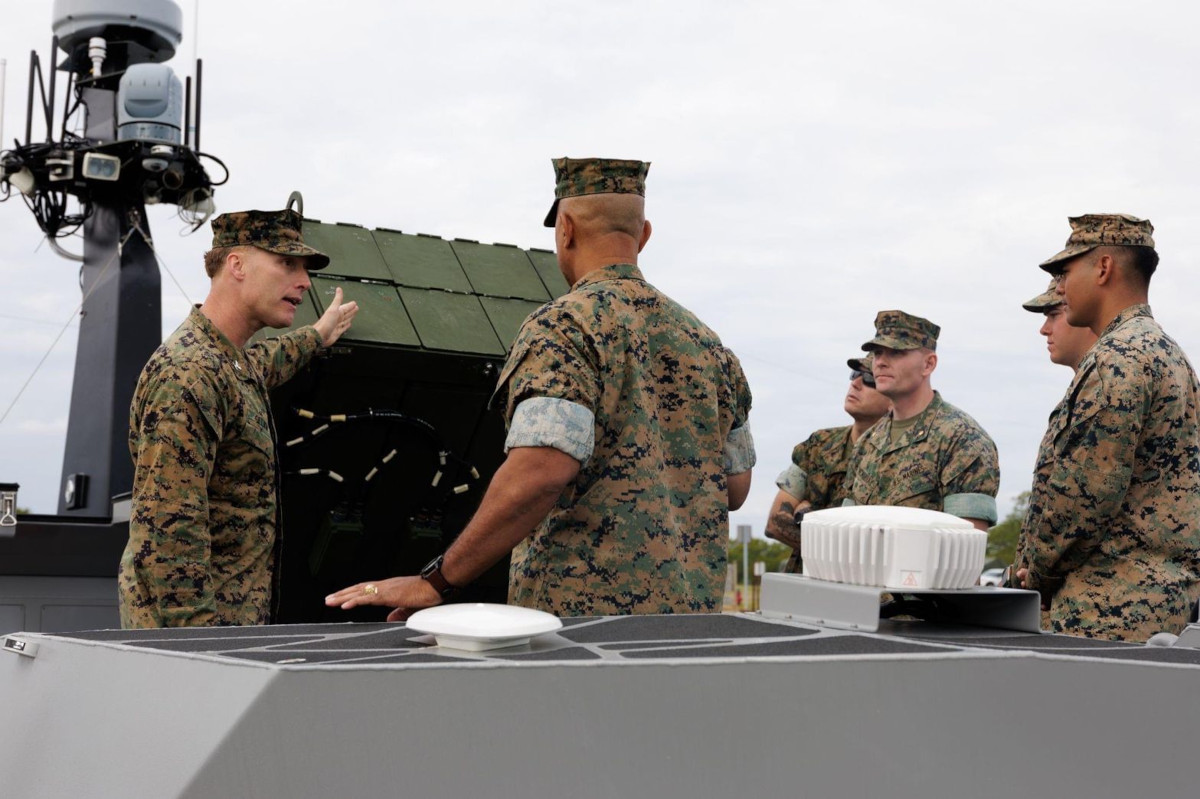
Metal Shark announced in January 2021 that it had won the contract to develop and supply LRUSVs to the Marines. The company has since delivered at least one prototype LRUSV fitted with the Hero-120 launcher, but it’s unclear how many the Corps may ultimately be looking to buy. The U.S. Navy has also been involved with the LRUSV program, given that the Marine Corps is contained within the Department of the Navy.

Readily available specifics about the LRUSV’s design and capabilities are currently limited. The Marines describe it as “semi-autonomous,” which should mean that it is capable of performing certain tasks independently after receiving instructions from a human operator.
“LRUSVs, employed individually or in formations of multiple vessels… will be unmanned vessels, capable of conducting semi-autonomous maneuvers in the open ocean for extended periods of time,” according to the Navy’s 2024 Fiscal Year budget request. The Department of the Navy is asking for around $25.25 million in the upcoming fiscal cycle for the LRSUV, which it says will help fund work on “autonomy behaviors, communication architecture, and improvements to the sensor and communication hardware.”
Back in 2021, the Pentagon also announced that it would be making work that had been done on an “autonomy module” as part of a project called the Low-Cost Cruise Missile (LCCM) available to the Marine Corps for its LRUSV program.
Metal Shark has separately said in the past that the LRUSV is capable of “extended autonomous travel” and of being optionally crewed, as well as that it can be networked together with other USVs.

That the Marine Corps has planned to arm the LRUSVs with Hero-120s has been known for some time now. Israeli drone maker UVision announced that its Hero-120, together with its Multi-Canister Launcher (MCL), had been selected as the winning entry in the Marine Corps’ Organic Precision Fires-Mounted (OPF-M) competition. At that time, the stated plan was to install MCLs on existing Marine LAV-25-series 8×8 wheeled light armored vehicles and the service’s future LRUSVs.

Hero-120s are also being made available to other Marine units in their man-portable configuration, which consists of one of the loitering munitions loaded inside a self-contained launch tube. One of these single-round launchers is also seen in the picture from Lt. Gen. Cavanaugh’s visit last month to Little Creek-Fort Story.
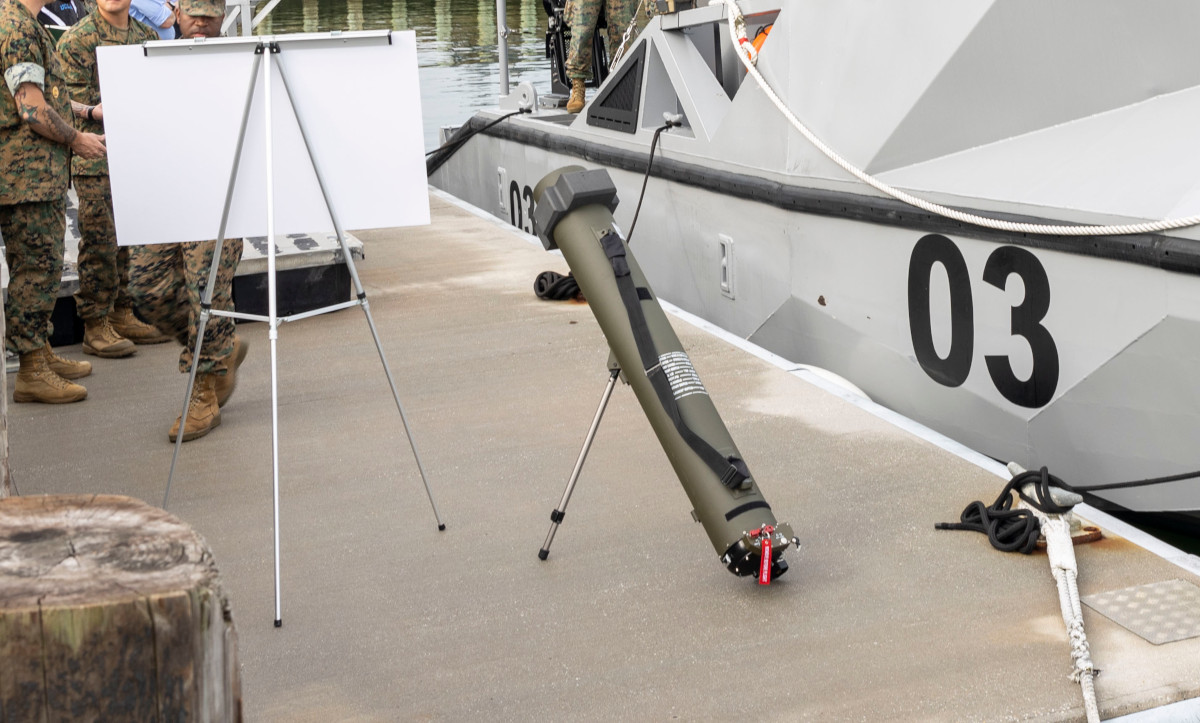
The Marines are acquiring a service-specific version of the Hero-120, the Hero-120 OPF, and it remains unclear exactly how it might differ from the standard model. Uvision’s website currently says the Hero-120 has a maximum range of at least 37 miles (60 kilometers), a modest increase in performance in this regard over what the company has said in the past. It can stay airborne for around 60 minutes. The baseline Hero-120 also has a high-explosive warhead weighing around 10 pounds.
The Hero-120, like most other loitering munitions, is from more traditional missiles and drones in how it can be employed thanks to its electro-optical and infrared cameras and operator-in-the-loop control system. This control concept, partially pioneered by Israeli companies along with the very idea of loitering munitions, allows a human user to ‘see’ what the munition does throughout the entire flight and make fine course adjustments. This helps with positive target identification and improves accuracy. It also provides the option of ‘waving off’ the munition even very late in the terminal phase of an attack, if necessary, such as due to the sudden appearance of innocent bystanders in the area.
Hero-120’s sensor suite also means it has secondary surveillance and reconnaissance capabilities. They can be recovered and refurbished for reuse if they complete a mission without attacking a target.

Exactly how Hero-120s would be controlled after launch from an LRUSV is not entirely clear. Without any personnel on the boats, the operator in the loop would have to be at a separate location. The loitering munition’s feed could be relayed through the data-sharing suite on the LRUSV, such as a satellite datalink.
Alternatively, those closer to the target area, either on the ground or riding on other ships or aircraft, could take control of the loitering munition after launch. The Marine Corps has already demonstrated just this during a test in 2022 that saw control of a larger Hero-400 passed between personnel at the launch site on the ground and Marines flying in a UH-1Y Venom helicopter and riding in an unspecified watercraft down below. Other Marine aircraft, including AH-1Z Viper attack helicopters and MV-22 Osprey tilt-rotors, could potentially be used in this role, too.
“They actually launched a Hero 400 for us, and then we controlled the Hero 400 from the back of a Huey all day long. We did multiple aborted attacks, we did a recce mission around the island with it and the entire time, we’re building situational awareness and sharing that with the battlespace commander down on the ground as far as situational awareness,” Marine Col. Nathan “MOG” Marvel, head of Marine Aircraft Group 39 (MAG-39), told The War Zone in an interview earlier this year. “That can be as easy as running it off a tablet. That can be as easy as integrating into the aircraft. Now I have a loitering ammunition that could be payload agnostic, network-enabled, and it could have a swarm capability. Anybody who needs it can either get it from me or give it to me.”
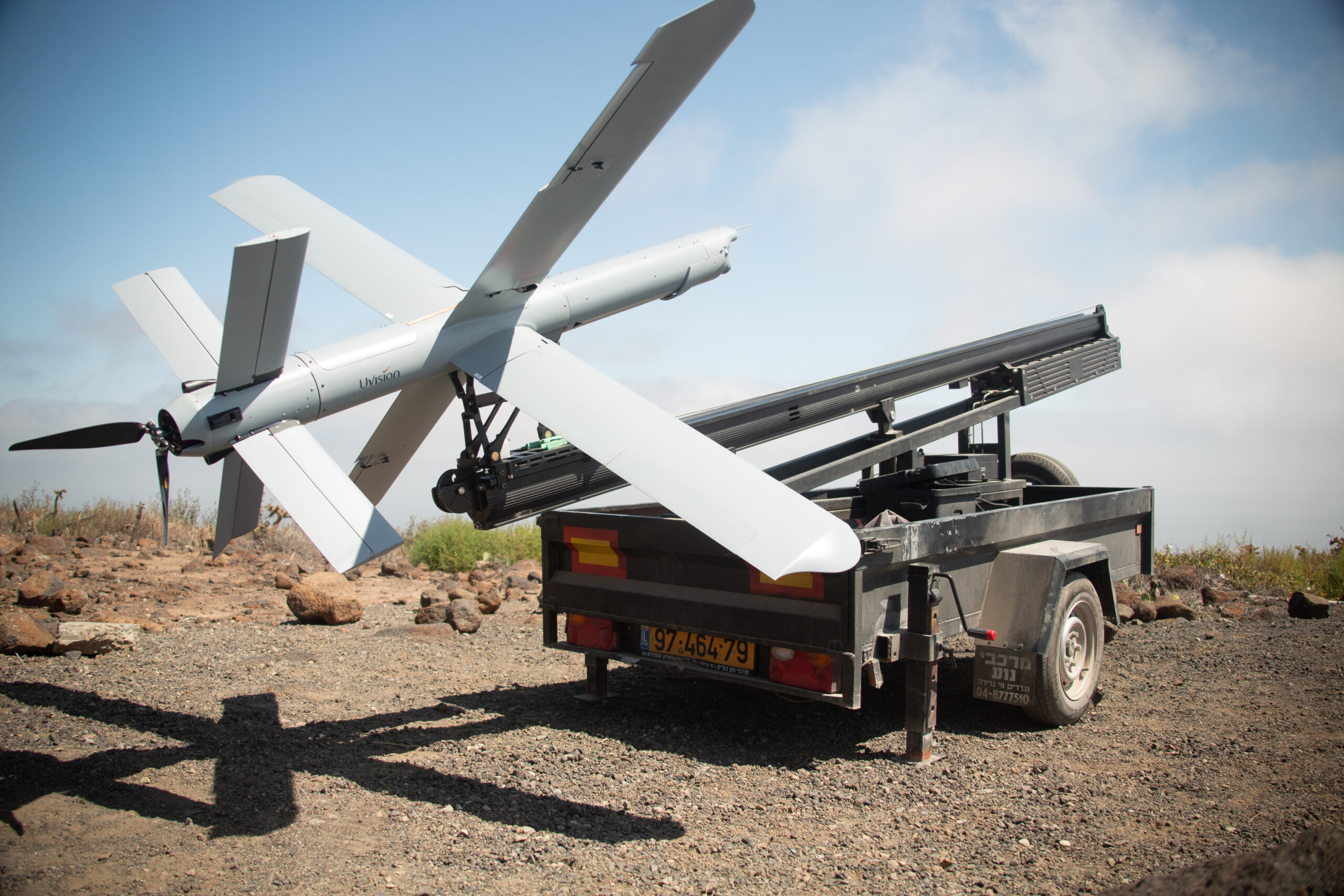
Marine Corps Hero-120s could also be employed in a fire-and-forget mode that does not involve an operator-in-the-loop, striking beyond-line-of-sight targets based on a specific set of GPS coordinates.
Depending on how the Marine Corps’ Hero-120s are configured, they could potentially be directed to simply strike a specific set of GPS coordinates, too.
Overall, the Marines, in cooperation with the Navy, are still very much exploring how they will use their new LRUSVs, with and without Hero-120s. Corps has been working to “determine the correct echelon of command” for these drone boats as part of experiments relating to its new Marine Littoral Regiment (MLR) formations.
“Based on MLR experimentation,” the Marine Corps said it hoped to figure out “the right echelon of command (MLR, Division, or MEF) for the LRUSV and where it is best postured (Hawaii, Guam, Okinawa, or other),” according to a May 2022 update from the service on the implementation of its new over-arching Force Design 2030 restructuring plans.
Force Design 2030, broadly, is centered on reformulating how the Marine Corps is organized as a whole. This has involved very dramatic changes, such as the elimination of the service’s M1 Abrams tanks, and a new focus on longer-range strike capabilities, among other things, as you can read more about here.
This restructuring is intertwined with a new set of still-evolving expeditionary distributed concepts of operations known collectively as Expeditionary Advance Base Operations (EABO). At its core, EABO envisions generally small Marine task forces with a variety of robust capabilities, including aviation assets and ground-based stand-off strike weapons, being able to readily establish forward operating bases, even in austere and remote locales. Those units would then be expected to hold enemy forces on land or at sea in the surrounding area at risk and also be capable of rapidly repositioning as required. Though EABO is not region-specific, there is also a clear focus within the Marines on being able to utilize these new tactics, techniques, and procedures in the Pacific, possibly in the context of a future high-end conflict against China.

It is not hard to see how a group of LRUSVs armed with Hero-120s capable of at least semi-autonomous operations could fit into those larger concepts of operations, especially in littoral environments in the Pacific. By launching the loitering munitions, the drone boats could extend their surveillance reach and provide general improved situational awareness around a forward island base area and have the option of immediately engaging any targets that might pop up.
A group of LRUSVs would be able to provide these capabilities in a flexible manner across a relatively broad area. The uncrewed vessels could present additional challenges to opponents by launching attacks on a single target area from multiple vectors at once. With the ability to hand off control, Marines elsewhere nearby, including at sea or in the air, could take over and use it to scout ahead or attack a target.
The Hero-120’s warhead might be small, but it could still be sufficient to take out a variety of targets ranging from vehicles to troops in the open to small boats. They could potentially be employed even against larger ships offshore by targeting their radars, communications antennas, or other key systems to affect a mission kill. Such attacks could potentially force the targeted ship to leave the area or otherwise render it combat ineffective for a significant period of time until sufficient repairs could be made. The Marine Corps has been separately exploring using the idea of small teams riding in rubber rafts armed with weapons like the Javelin anti-tank missile in a similar fashion.
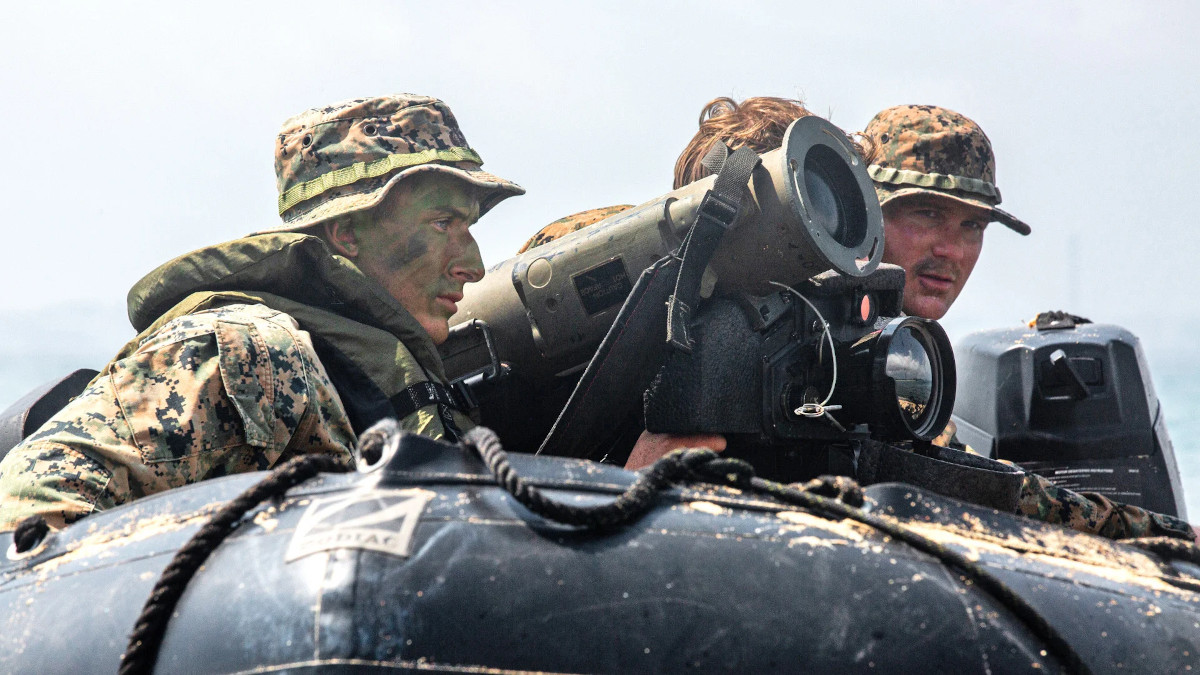
“Long Range Unmanned Surface Vessel (LRUSV) is a Marine Corps Force Design priority that has demonstrated, through extensive wargaming and simulations, significant operational impact in the Naval Expeditionary Force’s surface warfare campaign against peer competitors in the maritime battlespace, particularly when operating within planned sensor and communication networks,” the Navy’s Fiscal Year 2024 budget documents note.
Those same documents also underscore that the Marine Corps is looking to be able to deploy more than just Hero-120s from the LRUSVs. The use of these drone boats as launch platforms for “tele-operated Organic Precision Fires (OPF) [Hero-120] and small Unmanned Surface Vessels (sUSV) in support of sea control and sea denial operations,” is specifically mentioned.
For years now, the Navy has been conducting its own work on various tiers of drones that could be launched from crewed and uncrewed ships and submarines, as well as aircraft and other platforms, and employed as fully autonomous swarms. There has been a particularly heavy focus in this regard on experimentation involving Raytheon’s Coyote series of drones, which can be configured as loitering munitions. A similar drone with swarming capabilities that can be employed as a loitering munition, the ALTIUS-600, developed by Area-I, which was subsequently acquired by Anduril, is also becoming increasingly popular across the U.S. military.
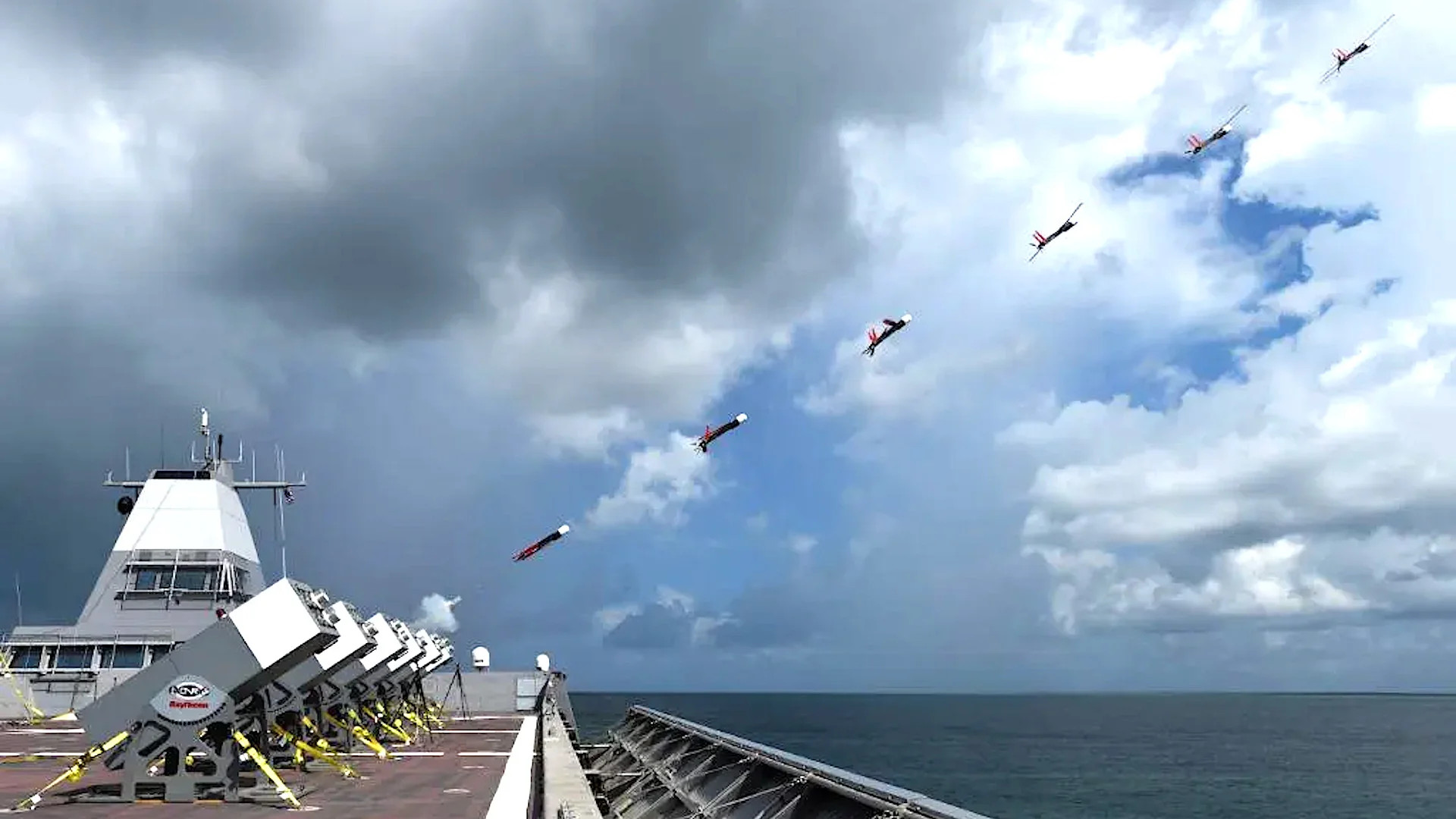
How exactly the LRUSVs might be deployed themselves remains to be seen. The Navy is already exploring ways it could use its existing amphibious warfare ships and Lewis B. Puller class sea bases as motherships for USVs and uncrewed undersea vehicles (UUV). The Marines are also seeking a new class of lighter amphibious vessels specifically to support future EABO operations, which might be capable of supporting forward-deployed LRUSVs, too.
Whatever the case, LRUSVs armed with Hero-120s and capable of deploying other uncrewed systems look set to be an important component of future Marine Corps expeditionary and distributed operations.
Contact the author: joe@thedrive.com
